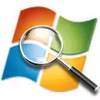Figure out what's slowing your system down by seeing every process that's running on your PC
Figure out what's slowing your system down by seeing every process that's running on your PC
Vote: (14 votes)
Program license: Free
Developer: Sysinternals
Version: 17.01
Works under: Windows
Vote:
Program license
(14 votes)
Free
Developer
Version
Sysinternals
17.01
Works under:
Windows
Process Explorer is an advanced monitoring tool for Windows that provides a deep dive into the workings of your system. It offers a myriad of details on the processes and files currently in operation, granting users a comprehensive overview of their PC's inner mechanics.
Deep System Insights
Process Explorer stands out with its detailed two-panel interface. The upper panel presents a run-down of active applications, while the lower panel serves up a wealth of information about the specific process selected by the user. This double-layered approach facilitates a thorough understanding of how individual applications interact with system resources.
Process Management Capabilities
A key feature of Process Explorer is its process management functionality. With it, users can easily terminate applications, modify the priority of running processes, and access in-depth properties of each process. The property details reveal key data such as memory usage and the space a process occupies, which is crucial for diagnosing system hiccups or optimizing performance.
System-Wide Statistics
For those interested in the broader state of their system, Process Explorer provides a tactical analysis. It imparts a comprehensive summary of system activities and exhibits extensive statistics along with graphs that cover CPU, memory, I/O, and more. This allows users to monitor and troubleshoot system performance issues effectively.
Diagnosis and Error Resolution
When troubleshooting, Process Explorer is a powerhouse, cataloging all DLL files within your system. This is particularly beneficial for pinpointing errors related to these files. Users can apply filters to display exclusively DLLs and memory-mapped files, streamlining the diagnostic process.
Interface and Usability
Albeit robust, Process Explorer's interface may present a steep learning curve to users unfamiliar with system diagnostic tools. While the dual-pane layout is logically organized, newcomers might find the quantity of information daunting. Additionally, the help file is not operational, which could stymie efforts to fully leverage the tool without external guidance.
Pros
- Provides detailed, dual-pane view of applications and processes
- Enables granular process management, including termination and priority settings
- Offers extensive system performance statistics and graphs
- List and filter functions for DLL and memory-mapped files aid in troubleshooting
Cons
- User interface may be overwhelming for beginners
- Lack of a functioning help file complicates the learning process for new users
In essence, Process Explorer is a formidable tool for users who need to perform in-depth analysis and management of Windows processes. Its array of features makes it an invaluable utility for maintaining system health and stability, provided users are able to navigate its comprehensive yet complex landscape.




